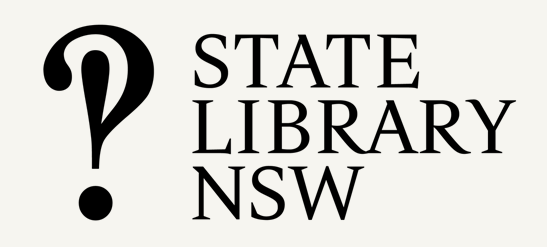Transcript
Margaret Warren, Coordinator, Discovery Services, State Library of Queensland
The Soldier Portraits Project was a really large undertaking to digitise and make available around about 27,000 portraits of Queensland servicemen who embarked and served in World War One.
The Soldier Portraits Project came about because we looked at The Queenslander Pictorial supplement, which was an eight-page pictorial supplement that got slotted into the weekend edition of The Queenslander newspaper and it showed pictures of all aspects of Queensland life both, regional, rural and life in the city.
As soldiers embarked to World War one, their portraits were taken by the Talma photographic studio. They set themselves up at the Enoggera enlistment camp, set up a tent and soldiers who enlisted at Enoggera had their portraits taken. It became wildly popular and so another studio – the Fegan studio – also came on board to take portraits.
One of the outcomes of the QAnzac 100 project was to leave a digital legacy, so we wanted to make really high-quality portraits of these soldiers available to leave a really strong digital legacy, both for a record of how Queenslanders served in the Great War, but also to make it easier for families to connect themselves to their family members who may have served in the war.
But I think, for me, the most important uses have been in connecting families to their family members. Probably one of my favorite stories is the story of an Indigenous servicemen called Valentine Hare, who had served in World War One and then had really disappeared when he came back, from the family. And Logan Library did a wonderful project to look at Indigenous stories from servicemen who have connections to Logan and through that process the local studies librarian there was able to find our portrait of their serviceman.
His name was Valentine Hare and for the first time in her life this woman was able to see a good quality image of her uncle, and she was holding on to this portrait and it was really the connection between this long-distant family member that she’d never known or seen was a really meaningful experience from for her. That’s probably one of my favorite stories.
Desmond Crump, Indigenous Languages Coordinator, State Library of Queensland
Most Aboriginal people were under the Protection Act, particularly in Queensland but also other states had a similar Protection Act that all came in around the end of the 1890s-early 1900s and so that basically controlled their lives, their movement, where they could live, they weren’t allowed to vote – all those other restrictions around it. And then, when the Defence Act came in in 1907, it specifically excluded Aboriginal people. It referred to only those of significantly European descent could actually enlist in the Australian forces.
Most Aboriginal people were living on missions or Aboriginal settlements, so basically under the control of the government. In Queensland, every Aboriginal person was classed as a ward of the state, so they didn’t have the, I guess, that autonomy, that power to make their own decisions. One of the things that happened was because of that Defense Act they had to convince the enlistment officer that they weren’t Aboriginal. So they a lot of them would disguise their identity, so Maori, Filipino, Spanish, all those other nationalities or cultural backgrounds were brought into it.
As the war went on there’s quite a few that did manage to sneak in neither, assumed identity or change of name. Some of them – there’s one case of an Aboriginal man from Queensland who couldn’t enlist up here; walked to Wagga, tried to enlist there but was seen as too Aboriginal again; crossed the border into Victoria and at Albury-Wadonga was able to enlist. And so, even though all those restrictions were in place, Aboriginal people still managed to enlist.
With all the heavy casualties on the Western Front, in 1917 in May there was a change in the Defense Force Act where an Aboriginal person who had at least one parent, and then later a grandparent, who was non-Aboriginal, and then there was another clause for the enlistment officers if they felt that that Aboriginal person had grown up with and worked with white people, then they were able to enlist. But again it came down to that personal judgment of the enlistment officer.
After the war, the recognition, that acknowledgement, all that comradery of serving in the war, that same recognition wasn’t given to the Aboriginal soldiers when they came back. They weren’t allowed to join the RSL. A lot of the men just returned to the missions and they had to hand their uniforms and any other possessions belonged to the Chief Protector if they were under the Protection Act. So they didn’t necessarily have their war service medals, they didn’t have their uniform to pass on to their children and grandchildren. So these men and their stories disappeared.
There’s no acknowledgement. The official war history written by Bean, it only identifies William Irwin as the only Aboriginal soldier. None of the other estimated 1200 to 1500 soldiers of Aboriginal descent were acknowledged or recognised in any way.
It wasn’t till the 1930s, when the RSL through their Revelry magazine, and particularly with some of the returned soldiers, they were saying, ‘Well, it’s time we acknowledged these Aboriginal men who fought alongside us. They died just as fine, [just] as well, as any other man who died in the trench.
They had the first Aboriginal Day of Mourning in Sydney, and so around that time there’s this agitation for recognising Aboriginal people as citizens, and then part of that was also recognising their efforts in the war. So the Revelry magazine, in the space of two or three journals, they’ve collected names of about 200 to 300 Aboriginal men.
It was the first recognition, the first acknowledgement, the first written record, of how many soldiers of Aboriginal descent actually served in the First World War. We think it’s somewhere between 1200 and 1500, but with the change of names or the hidden identities, some of those stories are only just coming to light. It is probably around that 300-350 Queensland Aboriginal blokes out of that total of the 1200, and I guess part of the State Library project is identifying those 320-350 men, and hopefully uncovering some of their stories that we can share with the wider Queensland and Australian community. Because there’s stories that up until the last 5-10 years, they weren’t known, they weren’t documented in the history of World War One, their stories weren’t told in in the classrooms when they did the history units on World War One, their names weren’t mentioned at the Anzac Day parades, they weren’t necessarily recognised by the RSL until after the 1960s-1970s, and so I guess the great thing with this project at the State Library is that we’re trying to document those stories. We record the histories that weren’t told, so that they reach a wider audience now
Graphics
Since 2014, State Library of Queensland has been profiling stories of Queensland Aboriginal and Torres Strait Islanders who volunteered to serve their country during WW1.
The project was ignited by interest from the Ration Shed Museum, keen to use the soldier portraits being digitised from The Queenslander for their own commemorative displays and publication- The Boys from Barambah.
To date, we have identified 270 men who were born, lived or enlisted in Queensland, of Indigenous heritage, and so far we have profiled 260 of these on State Library’s WW1 blog.
Discoverable, most importantly, to the descendants of these volunteers. We have received some really heartfelt feedback during the project, here is an example:
“Dear Grandfather Percy. I’ve known your name all my life. My mum always reminded us of her uncles Percy and Herb, although you had passed before she was born. Your story lives on in our oral history. I’m your youngest brother’s youngest granddaughter. 100 years ago, you committed your life to serve Australia. We have not forgotten and soon we will gather at your graveside to pay our deepest respects.”
Related links
QAnzac 100: Queensland’s Indigenous Servicemen of the First World War – State Library of Queensland









